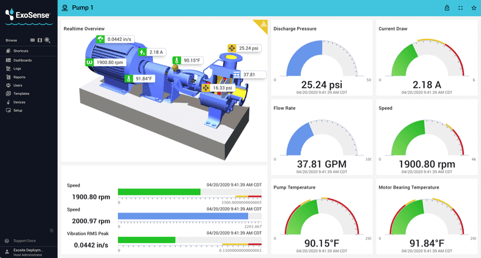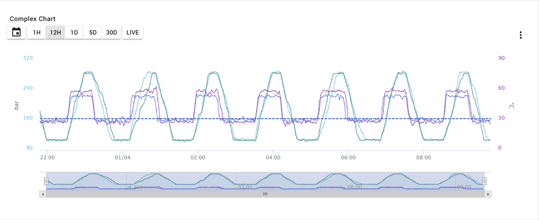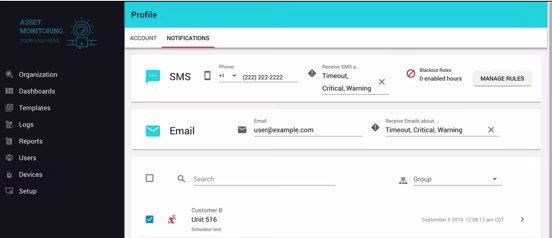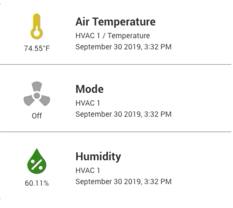OPC UA: A Communication Technology for Industry 4.0
by Ralf Pühler, on July 28, 2021
While we have seen a flood of innovations in the field of digitization in recent years, the one with the greatest impact is the OPC UA communication technology. After years of proprietary Fieldbus communication, we now have a clear path to seamlessly connect different machines and production networks in the world of information technology.
If we think back about a decade, it was only possible to read out machine data with increased effort. There was no talk of networking machines and systems on a large scale. But, as the requirements for production networks changed, so did the requirements of each individual machine. So, what is different?
- Today every machine and every product is automated in some way.
- Set-up times as non-value-adding activities disrupt the flow of production more than ever.
- Mass production gives way to individual product design with a quantity of "1."
- Remote maintenance is the non-plus-ultra that must be in place for sustainable operation of a system.
- Performance must be measurable in order to survive global competition.
Today everyone is talking about OPC UA as part of these changes. But what exactly is behind it? How can you implement OPC UA and incorporate it into the automation of machines? Are there best-practice approaches?
Hardware becomes a commodity, but manufacturers remain proprietary in software.
Today, all leading manufacturers of components for industrial automation offer OPC UA as a new standard to enable interoperability and communication for Industry 4.0. This makes hardware a commodity—features that differentiate manufacturers are relatively insignificant.
Horizontal and vertical networking is, therefore, a prerequisite. But, at the end of the day, a consistent engineering solution is also necessary. Due to the different hardware manufacturers, there are also different engineering platforms—little progress has been made here with regard to an open-source approach. Customers generally have to pay for access to work in one of the engineering platforms.
In addition, the platforms themselves are disappointing. So far, they have only insufficiently opened up to the IT world. The majority of them are primarily characterized by their performance in industrial automation (OT), and they offer few features to serve the IT aspects of modern Industry 4.0 solutions.
The essential aspects of OPC UA.
Asset Administration Shell
One thing has become immediately clear: OPC UA offers more than just seamless communication between network partners and is, therefore, not considered a "technology" for nothing. With meta information on each data point or on the machine itself, OPC UA gives you much greater opportunities to share details in a smart network. Most importantly, it offers the so-called administration shell.
The administration shell is the digital image of an object that provides the interface for Industry 4.0 communication. The goal is to describe the asset minimally, but adequately over its life cycle. Content-related, descriptive, or functional aspects are described in partial models. These can be, for example, characteristics like identification, security, energy management, or various process capabilities, such as drilling. In the case of intelligent products, the asset administration shell can be part of the asset; in the case of non-intelligent products, it can only be located in a cloud application or on an edge component.
Security
For the secure exchange of data, OPC UA offers comprehensive security features, which is an optimal prerequisite for horizontal and vertical networking. The security features are mapped on the "application layer" and "transport layer" levels.
At the application layer, the user can be identified by a username/password combination or a user certificate.
On the transport layer, TLS (transport layer security) makes data exchange secure. WS Secure Conversation is used for web services to ensure compatibility with .NET and other SOAP implementations. For the binary variant, the UA Secure Conversation is used, although the authentication only uses x509 certificates.
Semantic Self-Description
In semantic self-description, there is a distinction between "objects", "variables", "methods" and "events." The significance of this can quickly be understood using a specific example. The following information can be exchanged at the interface of a robot: "I am a robot (object), with tools (variables) for turning and welding (methods) and am currently welding (events)." Every other network participant immediately recognizes the type and status of a machine.
In the extension, the semantic self-description is then further standardized by means of a companion specification. Machine manufacturers and industrial associations have agreed to standardize the type of semantic self-description via the OPC Foundation. Uniform specifications are already available for the area of machine tools and plastics processing machines.
The challenges in engineering.
As plausible as the individual features mentioned above are, they also need appropriate engineering to implement them. However, inadequate standardization and commenting in the programming often leads to time-consuming research. You can only overcome this dilemma if you choose the right strategic path for OPC UA. Last but not least, the strategic approach can also be linked with possible future business field developments.
A question to consider in this context: What are customers asking for? Can the aftermarket service generate added value in maintenance and repair through an interface? How can I provide additional features on the machine?
The introduction of a new information system requires not only an overarching objective, but also suitable detailing and subdivision. The basic dimensions are: the concept, the interfaces, the productivity, the future security, and the costs of the solution. One possibility for orientation is provided by so-called user stories (i.e., a requirements analysis based specifically on customer needs).
Edge IoT: solutions for implementation.
Precisely because customers often want the opportunity to work with a machine interface themselves, direct access to the control of every machine does not make sense. In order to prevent damage caused by insufficient knowledge of the machine, it is advisable to set up an Edge IoT solution. This is how I separate real-time automation (OT) with that of IT networking. Such a solution is user-friendly and can also be developed into a comprehensive administration platform in just a few steps using intuitive GUIs.
Two approaches are available for this solution architecture:
- Thin edge: A simply designed edge client runs on a gateway on the machine. This can be managed individually by a cloud platform and gives immediate access to all relevant data. Simplified logic can be taken into account, as well as the interval with which the data is made available.
- Edge software framework: If there are greater requirements for data preprocessing or visualization on the machine, an extensive software framework offers numerous design options. Especially if no Internet connection can be provided for the machine, this allows for the possibility of providing additional features. In interaction with a cloud platform, these features can also complement each other.
In both cases, we attached great importance to an open-source approach. In addition, we also ensure that we can map all of the requirements of OPC UA. In particular, the edge software framework offers a comprehensive toolset for mapping any companion specifications—an information model can be put together in a short time using a no-code approach.
How Exosite and Lean IQ Can Help
Exosite and Lean IQ have partnered to provide both the roadmap and technology to help industrial manufacturing organizations implement an IoT-enabled strategy utilizing OPC UA. The collaboration utilizes Exosite’s ExoSense® remote monitoring solution, which is a cloud-based application that allows objects within an industrial manufacturing environment to be remotely sensed, monitored, and controlled.
ExoSense was specifically designed to accelerate development for industrial applications that need to send OT data to the cloud, where the data can be digitized, visualized, analyzed, and acted upon. In order to make this process as easy as possible, ExoSense can support data from a variety of industrial protocols including:
- OPC UA
- Modbus RTU
- Modbus TCP
- CANopen
- BACnet
- J1939
- Analog and digital I/O
ExoSense also provides capabilities that are critical to most industrial applications, including:
- Customizable dashboards. Create drag-and-drop dashboards that can be remotely viewed on any device to quickly understand machine health and reduce the need for onsite visits.

- Historical analysis. Visualize historical data with simple and complex line charts to identify problematic trends and critical events.

- Off-the-shelf rules. Detect warning and critical states with ready-to-use rules, including sustained thresholds and comparison functions.
.png?width=496&name=rule-tutorial-dashboard-critical-statuses%20(1).png)
- Alerts and notifications. Trigger email/SMS alerts based on real-time status to reduce downtime and increase productivity.

- Visual status indicators. Visually communicate the state of equipment with key indicator panels so users can quickly take corrective action when necessary.

- Analytics. Leverage operational analytics and data transformations to predict maintenance, improve processes, and enable machine learning.
===============
Ralf Pühler is a guest blog contributor and CEO of Lean IQ, a lean-management consultancy firm based in Europe. Lean IQ and Exosite have combined their expertise to provide both the roadmap and technology to help industrial manufacturing organizations implement an IoT-enabled strategy that will minimize waste, optimize resources, and enhance productivity.



